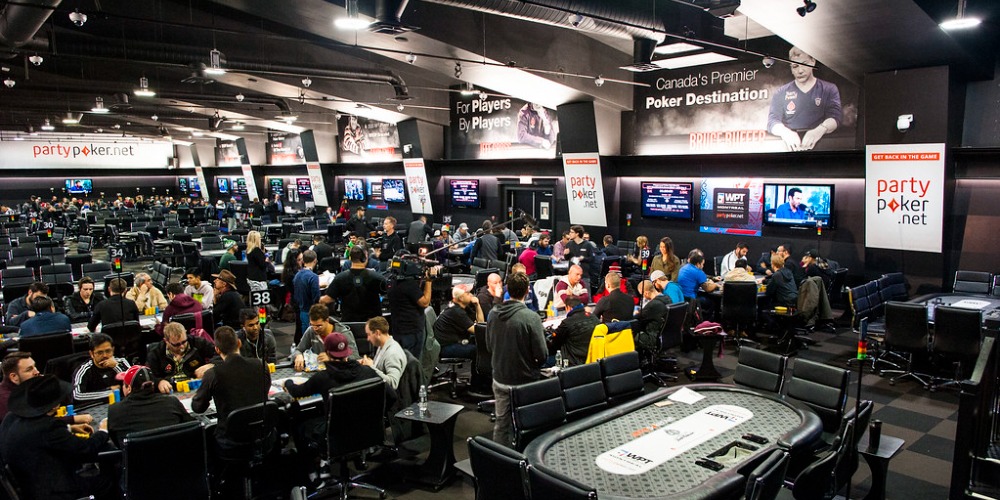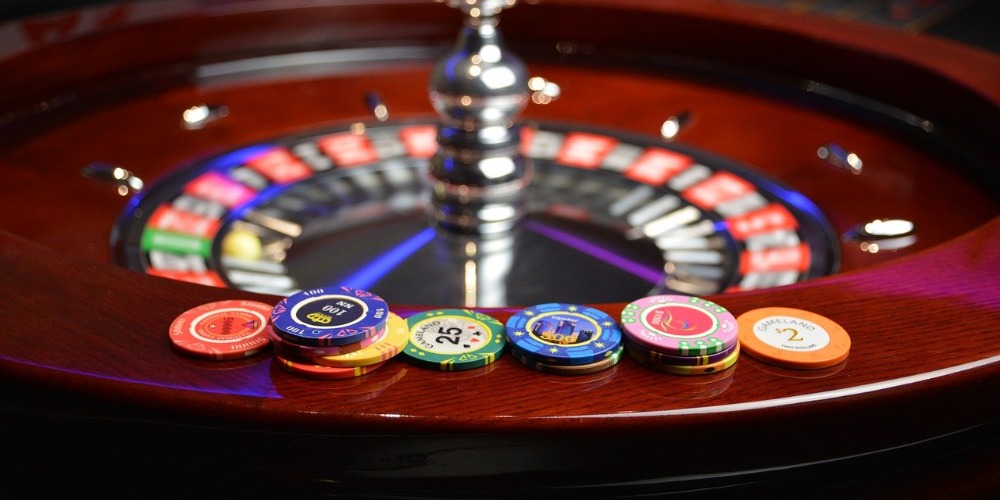This Is How Poker Tournaments Work
Posted: February 27, 2022
Updated: February 27, 2022
-
Learn everything about how poker tournaments work
-
Types, speeds, payouts, and more
-
Master the game of poker now

Poker tournaments are probably one of the, if not the most common ways of playing poker. Most likely all of us have played in such tournaments. There’s even a chance that you ended up in a smaller tournament before and were not aware of it. In this article, we’re going to explain how poker tournaments work. You will learn about the types of tournaments available, comparison between online and live events, speed of the tournaments, player seating, payouts, and more. Once you’re through with this article, you might even realize that you already sweat and bleed these tournaments. Meaning that you know everything about them.
Chips are a poker player’s bread and butter. In tournaments, people either have to pay an entry fee or qualify through other methods like satellite tournaments. Once you enter the tournament you receive chips that equal the worth of the entry fee. This is better because many tournaments use a freezeout (no re-entry) method. Why is this good? Because you can’t lose more than your entry fee. In regular cash poker games, you can keep buying more chips to keep your sinking boat afloat. It’s easier to keep a level head at tournaments because you feel more limited. A tournament usually ends when one player has all the chips or the house ends the game for some other reason. More of this later on.
Entry Fees In a Nutshell
Every poker tournament has a fixed entry fee that’s the same for every player, regardless of experience. Both the prize pool money and the rake are included in this fee. The rake is the house’s cut, so to say. Think of it as a VAT fee.

Online poker sites in the US and real-life tournaments can have varying rake fees. Usually, the rake is displayed next to the entry fee for most tournaments. It’s also not uncommon that smaller tournaments have a higher rake rate. Make sure to find out these details before entering a tournament.
The Two Most Common Types Of Poker Tournaments
Multi-Table Tournaments are the most common type but there are plenty of Single-Table Tournaments available as well. According to online poker news in the US, multi-table tournaments usually have a payout rate between 10% and 30%. Single-table tournaments score higher in this case. The more players enter a tournament, the more complicated the payout system becomes. For example, with only a couple of players, the first place gets everything. The individual prize rates will decrease slowly as the player base grows. What most multi-table tournaments use for their prize pool structure is often similar. The 1st placed player receives their prize in the following fashion: 100% with 2-4 players, 50% with 8-12 players, 40% with 13-27 players, 33% with 28 to 36 players, 29% with 37-50 players, 27% with 51 to 60 players. This is only an example of how prize-splitting may happen, it’s not a guarantee.
Things are much simpler at single-table tournaments. There are fewer players at these poker tournaments so the splitting of the prize pool works differently. As we mentioned before, the payout rate here is usually above 30%. At most times, you’ll find about 6 to 10 players at these tournaments. In these games, only the top three or two players are rewarded.

If you were wondering what the payout structure looks like, we’ll describe it in a nutshell. With 2-4 players, the 1st place gets everything. 5-7 entries see the 1st and 2nd places split the prize 65-35. And when it comes to 7-10 player single-table tournaments, the top 3 split the prize pool 50-30-20. STTs are also called Sit and Go tournaments, and many prefer them over their multi-table versions. They’re much faster and it makes you feel like you’ve reached the final in an MTT.
How Guaranteed Poker Tournaments Work
On certain occasions, there is a guaranteed prize pool provided. These events are called guaranteed tournaments or GTD. Poker tournament giants like GGPoker or WSOP have multiple guaranteed tournaments. The purpose of these is to set a fixed prize pool as if there were enough buy-ins. This is called an overlay and sets up the tournament as if there are already busted-out players. So you have a head start, sort of. GTDs almost always attract more people but that’s the idea behind them. More people enter the tournament and if there were a regular prize pool, it would probably be higher than the guaranteed amount. Knowing these still doesn’t take away from the fact that guaranteed tournaments are so much fun.
Freezeouts, Rebuys, and Re-Entries
The previously mentioned freezeout tournaments are the most popular type. The base rules are really simple. Players buy in once and once they run out of chips they bust out. There’s no option for re-entries but the games can still go on for a longer time. Freezeout tournaments are super fun and can be found pretty much anywhere. Rules regarding entries are always available on the tournament’s or organizer’s websites. Or you could just always ask the dealer if you’re playing live. The final prize pool is usually revealed once the entry phase closes. Sites like Everygame Poker have many freezeout tournaments.
At certain tournaments rebuys are available. Players can buy more chips if their stack is low or they bust out. The good thing is that the rebuy fee usually doesn’t contain the rake, so the house always wins but not that much this way. The difference in the final prize pool at these tournaments is also much higher because of the rebuy period. Since rebuys mean additional entry fees, the prize pool will increase significantly by the end of the tournament. There is another type of popular poker tournament, which is called a re-entry tournament. They’re pretty much the same as rebuy tournaments except a player can only get back in or buy in again once they’re eliminated. Also, they will most likely be seated at another table so revenge against your opponents will have to wait.
Player Seating Isn’t Overlooked at Tournaments
Many poker tournaments will work with tables of 9 or 10 people. It’s also possible that two decks are used in a game, depending on the setting.

Player seating is also important at proper poker tournaments. The most common method of seating is done randomly. This is used in most multi-table tournaments, and the seating is decided after the buy-in. Player choice seating will most likely not occur in professional tournaments. With this method, players can select exactly where they want to sit and by whose side.
Opposite to MTTs, single-table tournaments might use the drawing from the deck method. The players select from the laid-out cards and they get seated in a high-low card order. Redraws can happen in the event of a tie. The cards can also be ranked by suits. Spades over Hearts over Clubs over Diamonds. Whether you are playing on online poker sites in the US or at live multi-table tournaments, reseating is a common thing. Tables always need to be balanced so expect to be moved every once and then. Reseating is done in a way so that players will not lose any of their winnings.
The Speed of Poker Tournaments and How It Works
Starting stacks, blind structure, the option for rebuys or re-entries, and whether it’s a single- or multi-table tournament are all factors in this that can vary. Most tournaments will have fixed starting stacks so you cannot decide on a random buy-in amount.

These starting stacks or chips vary from tournament to tournament. They’re usually between 2.000 and 8.000 chips. If you’ve ever played poker before, you know that the blind levels always increase. Blinds can start with as little as 25 chips and go up to 5.000+. Increasing the blinds is necessary so that the games don’t go on for eternity. Blind-outs can happen to everyone as well. It’s when the starting blind becomes so big that a player cannot pay loses all of their chips. When someone “blinds out” they’re just prolonging the inevitable. If you know you’ll lose anyway, why not risk it all.
Live poker tournaments are much slower than online tournaments. At live tournaments or series, some events can last multiple days. Online tournaments are designed to be fast but still provide players with enough fun. The increase of blinds is determined by the stack sizes and the levels change according to these. Faster tournaments may increase the starting blinds every couple of minutes. This can be over two hours at slower poker tournaments. If you’re playing online, speed is not an issue. Players will see more hands and blind levels increase much faster than at live tournaments. Games on Everygame Poker are much faster than live events too.
Tournament Starting Times and Early Endings
Since most poker tournaments are MTTs they will have some kind of schedule. These tournaments will start on a previously set starting time. STTs or Sit and Go tournaments usually start when the necessary number of players has been reached.

We explained what affects a tournament’s length, now let’s discuss the ending. The whole thing ends when one player has all the chips. However, there are a few occasions when a tournament can end early. For example, the remaining players can agree on a final payout and end a game early. Continuing without further betting is also an option. This is only common with friendly poker tournaments, however.
Satellite events are tournaments with lower buy-ins that serve as a path to higher-end poker tournaments. Players can compete for a seat at much bigger tournaments. If they win, there’s no need to pay the buy-in at the bigger tournaments. WSOP and GGPoker also have frequent satellite tournaments. These games usually run through multiple days or weeks so that more people have the chance to gain entries. Satellite events can end when the number of seats or entries has been won.
Payout is One Of The Most Important Things In Poker
Payouts are every poker player’s concern. Players compete to win a portion of the prize pool, which is made up of all of their entry fees. Thousands may enter a tournament but only a few dozen might win anything at all. The payout rates vary at every tournament. Understand that as the number of entrants grows, so will the prize pool. This will lead to smaller shares in prize percentages but not the prizes themselves. After all, what’s better? Winning 100% of a $50.000 prize pool or 25% of a $500.000 pool? We’ll answer that question for you, it’s the latter. And that’s considered low at the best online poker tournaments.
Click here to stay tuned with Everygame Poker












